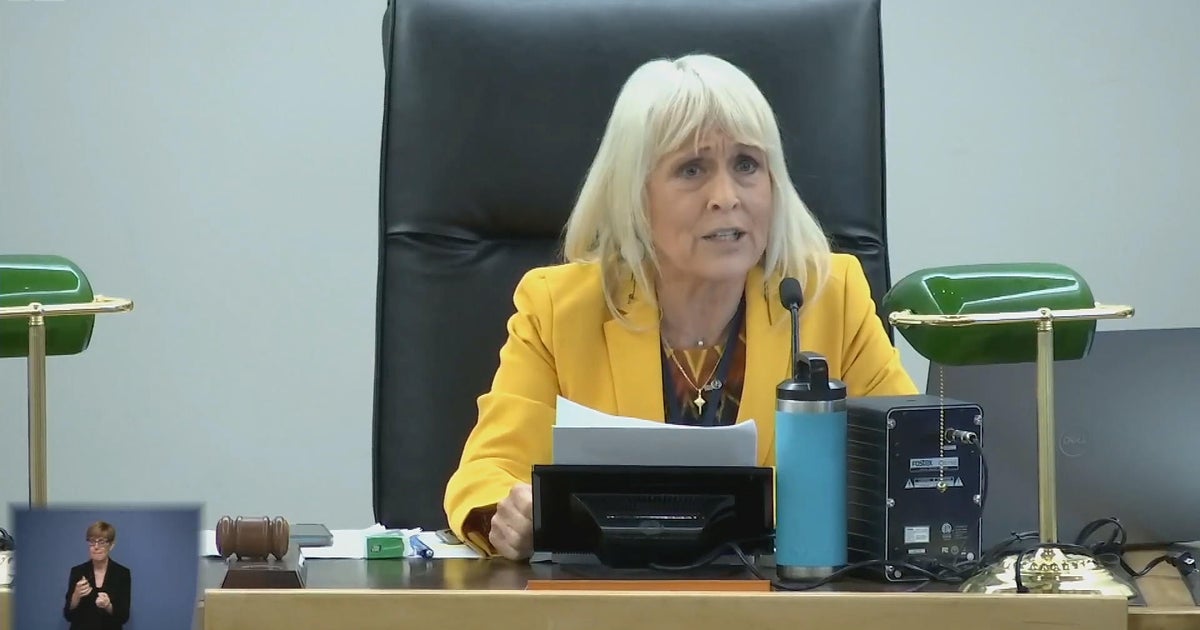MADISON, Wis. (AP) – Wisconsin Gov. Tony Evers’ creative use of his expanded veto power in an effort to lock in a 400-year increase in school funding goes before the state Supreme Court on Wednesday.
A key question facing the liberal-controlled court is whether state law allows governors to eliminate numbers to create a new number, as Evers did with the veto in question.
The case, backed by the Republican-controlled Legislature, is the latest flashpoint in a decades-long battle over how broad the Wisconsin governor’s partial veto powers should be. The issue has crossed party lines, with Republicans and Democrats over the years pushing for more restrictions on the governor’s veto.
In this case, Evers issued the veto in question in 2023. His partial veto increased the amount of revenue that K-12 public schools can generate per student by $325 per year to 2,425. Evers used language that originally called for the $325 increase for applied the period 2023-2024. and the school years 2024-25 and instead vetoed the “20” and the hyphen to set the end date at 2425, more than four centuries from now.
“The veto here approaches the absurd and exceeds any reasonable understanding of the legislature’s or voter’s intent in adopting the partial veto or subsequent limits,” attorneys for legal scholar Richard Briffault of Columbia Law School said before arguments in an application to the court.
The Wisconsin Manufacturers & Commerce Litigation Center, which handles lawsuits for the state’s largest business lobbying group, filed the lawsuit, arguing that Evers’ veto was unconstitutional. The Republican-controlled Legislature supports the lawsuit.
The lawsuit asks the court to overturn Evers’ partial veto and declare that the state constitution prohibits the governor from using numbers to create a new year or removing language to create a longer duration than that approved by the legislature.
If they found otherwise, governors would be given “unfettered power” to change numbers in a budget bill, the attorneys who filed the lawsuit argued in court filings.
Evers, his lawyers argue, simply used a long-standing partial veto to ensure that the funding increase for schools would not end after two years.
Wisconsin’s partial veto was created by a 1930 constitutional amendment but has been weakened over the years, including in response to vetoes by former governors, both Republicans and Democrats.
Voters in 1990 and 2008 passed constitutional amendments that removed the ability to delete individual letters to create new words – the “Vanna White” veto – and the power to delete words and numbers in two or more sentences to create a new sentence to create – to take away the ‘Frankenstein’. veto.
The lawsuit filed in court Wednesday argues that Evers’ partial veto is barred under the 1990 constitutional amendment banning the “Vanna White” veto.
But Evers, through his attorneys at the Justice Department, argued that the “Vanna White” veto ban only applies to striking out individual letters to create new words, not to vetoing numbers to create new numbers.
Reforming state budgets through a partial veto is a longstanding act of gamesmanship in Wisconsin between the governor and the Legislature, as lawmakers try to craft bills in a way that is largely immune to creative vetoes.
Former Republican Governor Scott Walker used his veto in 2017 to extend a state program deadline from 2018 to 3018. That became known as the “millennial veto.”
Former Republican Gov. Tommy Thompson holds the record for the most partial vetoes of any governor in a single year — 457 in 1991. Evers issued 51 partial budget vetoes in 2023.
The Wisconsin Supreme Court, then controlled by conservatives, overturned three partial vetoes by Evers in 2020, but a majority of justices did not provide clear guidance on what was allowed. Two justices have said that partial vetoes cannot be used to create new policy.






